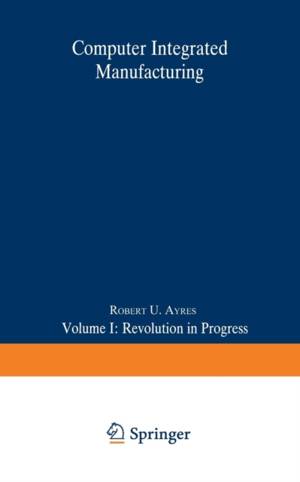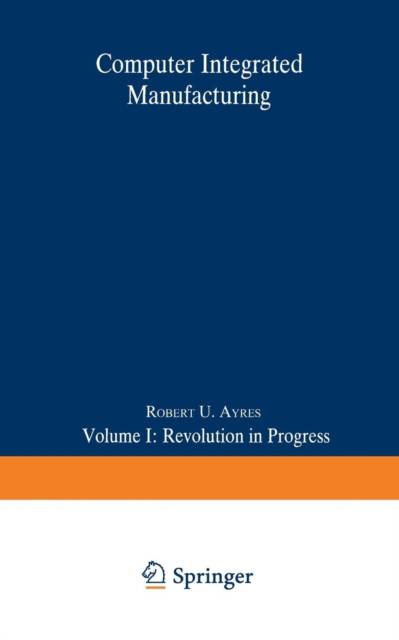
- Afhalen na 1 uur in een winkel met voorraad
- Gratis thuislevering in België vanaf € 30
- Ruim aanbod met 7 miljoen producten
- Afhalen na 1 uur in een winkel met voorraad
- Gratis thuislevering in België vanaf € 30
- Ruim aanbod met 7 miljoen producten
Zoeken
Computer Integrated Manufacturing
Volume I: Revolution in Progress
Robert U Ayres
Paperback | Engels
€ 83,95
+ 167 punten
Omschrijving
Motivation of the Study CIM is an abbreviation for Computer Integrated Manufacturing (see Sec- tion 1. 4, Chapter 1). It is an acronym that has become fairly weIl known in recent years in manufacturing and related engineering circles, although most laymen have never heard the term. The question naturaIly arises: why should a multinational, multidisciplinary organization like IIASA under- take a major study of such a seemingly arcane topic at this time of glasnost, perestroika, nuclear disarmament, and concern with global climate change, among other issues of global significance competing for our attention? The short answer to this rhetorical question is that we think a new industrial revolution is under way. If the first industrial revolution was the substitution of steam power for human and animal muscles, the present revolution is the substitution of electronic sensors for human eyes and ears, and computers for human brains, at least in a certain category of routine 'on-line' manufacturing operations. Its consequences may be as far- reaching (and as unexpected) as the consequences of the 'first' industrial revolution, which was just beginning about two centuries ago. The industrial importance of steam power was, of course, obvious to the farsighted entrepreneurs who actively developed and invested in it, from Roebuck, Boulton, and the Wilkinsons to the Stephensons. But the larger- and longer-run implications of its use - from 'satanic mills', child labour, and Marxism to acid rain and climate change - were not foreseen at aIl.
Specificaties
Betrokkenen
- Auteur(s):
- Uitgeverij:
Inhoud
- Aantal bladzijden:
- 265
- Taal:
- Engels
Eigenschappen
- Productcode (EAN):
- 9789401511087
- Verschijningsdatum:
- 16/01/2013
- Uitvoering:
- Paperback
- Formaat:
- Trade paperback (VS)
- Afmetingen:
- 127 mm x 203 mm
- Gewicht:
- 281 g

Alleen bij Standaard Boekhandel
+ 167 punten op je klantenkaart van Standaard Boekhandel
Beoordelingen
We publiceren alleen reviews die voldoen aan de voorwaarden voor reviews. Bekijk onze voorwaarden voor reviews.








